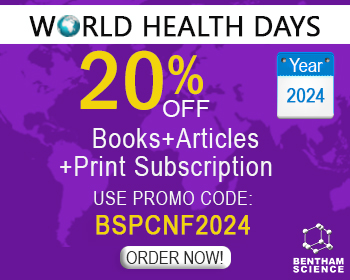Abstract
As manifestations of excessive and uncontrolled intake, obesity and drug addiction have generated much research aimed at identifying common neuroadaptations that could underlie both disorders. Much work has focused on changes in brain reward and motivational circuitry that can overexcite eating and drug-taking behaviors. We suggest that the regulation of both behaviors depends on balancing excitation produced by stimuli associated with food and drug rewards with the behavioral inhibition produced by physiological “satiety” and other stimuli that signal when those rewards are unavailable. Our main hypothesis is that dysregulated eating and drug use are consequences of diet- and drug-induced degradations in this inhibitory power. We first outline a learning and memory mechanism that could underlie the inhibition of both food and drug-intake, and we describe data that identifies the hippocampus as a brain substrate for this mechanism. We then present evidence that obesitypromoting western diets (WD) impair the operation of this process and generate pathophysiologies that disrupt hippocampal functioning. Next, we present parallel evidence that drugs of abuse also impair this same learning and memory process and generate similar hippocampal pathophysiologies. We also describe recent findings that prior WD intake elevates drug self-administration, and the implications of using drugs (i.e., glucagon-like peptide- 1 agonists) that enhance hippocampal functioning to treat both obesity and addiction are also considered. We conclude with a description of how both WD and drugs of abuse could initiate a “vicious-cycle” of hippocampal pathophysiology and impaired hippocampal-dependent behavioral inhibition.
Keywords: Obesity, drug abuse, learning, memory, hippocampus, Western diet, vicious-cycle model.
[http://dx.doi.org/10.1001/jama.2016.6361] [PMID: 27272581]
[http://dx.doi.org/10.1016/S0140-6736(14)60460-8] [PMID: 24880830]
[http://dx.doi.org/10.1111/add.14234] [PMID: 29749059]
[http://dx.doi.org/10.3389/fpsyg.2014.00919] [PMID: 25278909]
[http://dx.doi.org/10.1038/nn1452] [PMID: 15856062]
[http://dx.doi.org/10.1016/j.tins.2015.04.002] [PMID: 25959611]
[http://dx.doi.org/10.1111/j.1467-789X.2012.01031.x] [PMID: 23016694]
[http://dx.doi.org/10.1016/j.pbb.2017.01.001] [PMID: 28063947]
[http://dx.doi.org/10.1016/j.tins.2013.01.002] [PMID: 23333343]
[http://dx.doi.org/10.1111/bph.12735] [PMID: 24749941]
[http://dx.doi.org/10.1016/j.nlm.2013.07.014] [PMID: 23887140]
[http://dx.doi.org/10.1037/xan0000029] [PMID: 25453037]
[http://dx.doi.org/10.1111/1467-8721.ep10769943]
[http://dx.doi.org/10.1177/0956797617719084] [PMID: 28957015]
[http://dx.doi.org/10.1016/j.nlm.2016.06.005] [PMID: 27296700]
[http://dx.doi.org/10.1016/j.appet.2011.12.006] [PMID: 22200411]
[http://dx.doi.org/10.1002/wcs.1225] [PMID: 23772263]
[http://dx.doi.org/10.3758/BF03199928]
[http://dx.doi.org/10.1093/acprof:oso/9780195100273.001.0001]
[http://dx.doi.org/10.1002/hipo.22542] [PMID: 26493973]
[http://dx.doi.org/10.1016/j.cub.2018.03.012] [PMID: 29606418]
[http://dx.doi.org/10.1016/j.bbr.2014.08.063] [PMID: 25218872]
[http://dx.doi.org/10.1016/j.neubiorev.2018.09.016] [PMID: 30261198]
[http://dx.doi.org/10.1002/(SICI)1098-1063(1999)9:2<143:AID-HIPO6>3.0.CO;2-Z] [PMID: 10226775]
[http://dx.doi.org/10.1016/j.bbr.2016.07.039] [PMID: 27457133]
[http://dx.doi.org/10.1016/j.nlm.2015.11.008] [PMID: 26642918]
[http://dx.doi.org/10.1523/JNEUROSCI.1463-12.2012] [PMID: 22875926]
[http://dx.doi.org/10.1038/mp.2017.91] [PMID: 28461695]
[http://dx.doi.org/10.1037/0735-7044.99.6.1031] [PMID: 3843537]
[http://dx.doi.org/10.1111/1467-9280.00073]
[http://dx.doi.org/10.1016/0163-1047(93)90925-8] [PMID: 8476385]
[http://dx.doi.org/10.1037/a0018402] [PMID: 20141284]
[http://dx.doi.org/10.1523/JNEUROSCI.1388-04.2004] [PMID: 15295033]
[http://dx.doi.org/10.1002/hipo.20499] [PMID: 18831000]
[http://dx.doi.org/10.1002/hipo.22692] [PMID: 28121049]
[http://dx.doi.org/10.1002/hipo.22062] [PMID: 22927320]
[http://dx.doi.org/10.1523/ENEURO.0457-18.2018] [PMID: 30693314]
[http://dx.doi.org/10.1080/10408398.2016.1158690] [PMID: 27127938]
[http://dx.doi.org/10.1016/j.biopsycho.2016.12.013] [PMID: 28011401]
[http://dx.doi.org/10.1111/adb.12389] [PMID: 27001197]
[http://dx.doi.org/10.1037/bul0000109] [PMID: 28616995]
[http://dx.doi.org/10.1017/S0029665117000805] [PMID: 28514983]
[http://dx.doi.org/10.3233/JAD-2010-091414] [PMID: 20413889]
[http://dx.doi.org/10.1016/j.physbeh.2012.05.015] [PMID: 22634281]
[http://dx.doi.org/10.1016/j.neuroscience.2013.08.044] [PMID: 23999121]
[http://dx.doi.org/10.1016/j.physbeh.2018.03.017] [PMID: 29555194]
[http://dx.doi.org/10.1037/bne0000110] [PMID: 26595878]
[http://dx.doi.org/10.1016/S0306-4522(02)00123-9] [PMID: 12088740]
[http://dx.doi.org/10.1002/cne.23708] [PMID: 25380530]
[http://dx.doi.org/10.1016/j.bbr.2016.03.018] [PMID: 26970578]
[http://dx.doi.org/10.1016/j.appet.2016.12.010] [PMID: 27940315]
[http://dx.doi.org/10.3389/fnagi.2014.00088] [PMID: 24847262]
[http://dx.doi.org/10.1101/cshperspect.a020412] [PMID: 25561720]
[http://dx.doi.org/10.1007/s11481-017-9752-7] [PMID: 28555373]
[http://dx.doi.org/10.1177/0271678X16629976] [PMID: 26823471]
[http://dx.doi.org/10.1084/jem.20171406] [PMID: 29061693]
[http://dx.doi.org/10.1016/j.semcdb.2014.10.003] [PMID: 25444846]
[http://dx.doi.org/10.1016/j.bbi.2016.03.010] [PMID: 26995317]
[http://dx.doi.org/10.1016/j.neuroscience.2015.03.007] [PMID: 25772789]
[http://dx.doi.org/10.1016/j.neures.2013.10.004] [PMID: 24144733]
[http://dx.doi.org/10.3390/cancers11010024] [PMID: 30591653]
[http://dx.doi.org/10.1046/j.1471-4159.1999.0730309.x] [PMID: 10386984]
[http://dx.doi.org/10.1002/ana.22664] [PMID: 22190370]
[http://dx.doi.org/10.1016/j.tins.2017.02.005] [PMID: 28318543]
[http://dx.doi.org/10.1016/j.bbi.2015.08.023] [PMID: 26336035]
[http://dx.doi.org/10.1016/j.bbi.2014.06.017] [PMID: 24998196]
[http://dx.doi.org/10.3390/nu7085307] [PMID: 26274972]
[http://dx.doi.org/10.1016/j.bbi.2016.07.151] [PMID: 27448745]
[http://dx.doi.org/10.1016/j.bbi.2014.03.005] [PMID: 24662056]
[PMID: 2211679]
[http://dx.doi.org/10.1152/ajpendo.00712.2009] [PMID: 20009031]
[http://dx.doi.org/10.1016/j.cell.2016.08.010] [PMID: 27565353]
[http://dx.doi.org/10.1016/j.molmet.2018.02.004] [PMID: 29506909]
[http://dx.doi.org/10.1016/j.appet.2015.03.037] [PMID: 25862980]
[http://dx.doi.org/10.1007/BF00426752] [PMID: 97710]
[http://dx.doi.org/10.1016/S0893-133X(02)00365-2] [PMID: 12464446]
[http://dx.doi.org/10.1016/j.biopsych.2004.05.019] [PMID: 15336512]
[http://dx.doi.org/10.1016/j.neuropharm.2010.08.012] [PMID: 20732335]
[http://dx.doi.org/10.1007/s00213-012-2882-y] [PMID: 23010798]
[http://dx.doi.org/10.1111/adb.12082] [PMID: 23919443]
[http://dx.doi.org/10.1016/j.bbr.2010.12.017] [PMID: 21184782]
[http://dx.doi.org/10.1016/j.pbb.2006.07.017] [PMID: 16934862]
[http://dx.doi.org/10.1016/S0376-8716(99)00158-1] [PMID: 10940548]
[http://dx.doi.org/10.1176/appi.ajp.158.1.86] [PMID: 11136638]
[http://dx.doi.org/10.1001/archpsyc.58.4.334] [PMID: 11296093]
[http://dx.doi.org/10.1176/appi.ajp.158.7.1075] [PMID: 11431229]
[http://dx.doi.org/10.1038/sj.npp.1301371] [PMID: 17375140]
[http://dx.doi.org/10.1038/sj.npp.1300579] [PMID: 15483559]
[http://dx.doi.org/10.1111/j.1460-9568.2007.05674.x] [PMID: 17650119]
[http://dx.doi.org/10.1101/lm.2273111] [PMID: 22005750]
[http://dx.doi.org/10.1007/s00213-009-1700-7] [PMID: 19847405]
[http://dx.doi.org/10.1038/npp.2017.144] [PMID: 28695893]
[http://dx.doi.org/10.1016/j.nlm.2007.01.003] [PMID: 17337218]
[http://dx.doi.org/10.1101/lm.042192.116] [PMID: 27634143]
[http://dx.doi.org/10.3389/fpsyt.2015.00189] [PMID: 26834649]
[http://dx.doi.org/10.1016/j.neuroimage.2004.09.001] [PMID: 15627581]
[http://dx.doi.org/10.1073/pnas.89.5.1837] [PMID: 1542680]
[http://dx.doi.org/10.1002/(SICI)1098-1063(1998)8:3<198:AID-HIPO2>3.0.CO;2-G] [PMID: 9662134]
[http://dx.doi.org/10.1002/hipo.20240] [PMID: 17143905]
[http://dx.doi.org/10.1093/brain/awp012] [PMID: 19251757]
[http://dx.doi.org/10.1176/appi.ajp.162.8.1507] [PMID: 16055773]
[http://dx.doi.org/10.1016/j.drugalcdep.2005.08.003] [PMID: 16171953]
[http://dx.doi.org/10.3109/00207459109150348] [PMID: 1938157]
[http://dx.doi.org/10.1111/j.1521-0391.2011.00128.x] [PMID: 21477051]
[http://dx.doi.org/10.3109/00952999208992826] [PMID: 1562011]
[http://dx.doi.org/10.1192/bjp.bp.112.118091] [PMID: 23703315]
[http://dx.doi.org/10.1038/npp.2008.60] [PMID: 18496524]
[http://dx.doi.org/10.1016/S0893-133X(00)00097-X] [PMID: 10882838]
[http://dx.doi.org/10.1080/10550490050148053] [PMID: 11000918]
[http://dx.doi.org/10.1300/J069v21n01_06] [PMID: 11831501]
[http://dx.doi.org/10.1016/j.jsat.2004.03.011] [PMID: 15223095]
[http://dx.doi.org/10.1016/j.biopsych.2004.10.022] [PMID: 15607301]
[http://dx.doi.org/10.1080/01688638708405053] [PMID: 3597725]
[http://dx.doi.org/10.1016/S0376-8716(02)00012-1] [PMID: 12062785]
[http://dx.doi.org/10.1007/s002130000628] [PMID: 11314677]
[http://dx.doi.org/10.1007/s00213-010-1800-4] [PMID: 20217055]
[http://dx.doi.org/10.1212/01.wnl.0000201279.83203.c6] [PMID: 16534113]
[http://dx.doi.org/10.1001/jama.1996.03530310027028] [PMID: 8606472]
[http://dx.doi.org/10.1001/archpsyc.58.10.909] [PMID: 11576028]
[http://dx.doi.org/10.1001/jama.287.9.1123] [PMID: 11879109]
[http://dx.doi.org/10.1017/S1355617712000586] [PMID: 22676889]
[http://dx.doi.org/10.1016/j.pbb.2018.05.005] [PMID: 29753886]
[http://dx.doi.org/10.1182/blood-2010-10-313593] [PMID: 21148086]
[http://dx.doi.org/10.1111/adb.12301] [PMID: 26374627]
[http://dx.doi.org/10.1016/j.bbi.2017.02.017] [PMID: 28237710]
[http://dx.doi.org/10.1002/syn.20324] [PMID: 16952162]
[http://dx.doi.org/10.1196/annals.1432.005] [PMID: 18991857]
[http://dx.doi.org/10.1016/j.brainres.2011.07.013] [PMID: 21803344]
[http://dx.doi.org/10.1097/WNR.0b013e32834d0bc8] [PMID: 21979424]
[http://dx.doi.org/10.1161/STROKEAHA.111.648923] [PMID: 22426312]
[http://dx.doi.org/10.1038/jcbfm.2009.112] [PMID: 19654589]
[http://dx.doi.org/10.1016/j.brainres.2008.01.093] [PMID: 18329007]
[http://dx.doi.org/10.1186/1750-1326-8-22] [PMID: 23799892]
[http://dx.doi.org/10.1177/0271678X15616978] [PMID: 26661236]
[http://dx.doi.org/10.3390/ijerph7124111] [PMID: 21317997]
[http://dx.doi.org/10.1002/jps.10256] [PMID: 12434396]
[http://dx.doi.org/10.1016/j.brainres.2004.08.043] [PMID: 15494156]
[http://dx.doi.org/10.1111/j.1471-4159.2010.07054.x] [PMID: 20950334]
[http://dx.doi.org/10.1196/annals.1369.020] [PMID: 17105918]
[http://dx.doi.org/10.1016/j.psychres.2008.10.034] [PMID: 19233481]
[http://dx.doi.org/10.1523/JNEUROSCI.1179-08.2008] [PMID: 18509037]
[http://dx.doi.org/10.1016/j.expneurol.2007.11.017] [PMID: 18190912]
[http://dx.doi.org/10.1016/j.pharep.2014.08.003] [PMID: 25560579]
[http://dx.doi.org/10.1152/ajpheart.00928.2010] [PMID: 21239632]
[http://dx.doi.org/10.3389/fphar.2012.00121] [PMID: 22754527]
[http://dx.doi.org/10.1038/s41598-019-47454-4] [PMID: 31358844]
[http://dx.doi.org/10.1016/j.pbb.2019.01.007] [PMID: 30695700]
[http://dx.doi.org/10.1152/ajpgi.00448.2003] [PMID: 14665437]
[http://dx.doi.org/10.1037/1064-1297.9.2.131] [PMID: 11518086]
[http://dx.doi.org/10.1037/1064-1297.9.2.151] [PMID: 11518089]
[http://dx.doi.org/10.1007/s00213-002-1366-x] [PMID: 12644888]
[http://dx.doi.org/10.1097/00001756-200102120-00029] [PMID: 11209944]
[http://dx.doi.org/10.1007/978-3-642-73223-2_1]
[http://dx.doi.org/10.1016/S0091-3057(99)00047-7] [PMID: 10515310]
[http://dx.doi.org/10.1007/s00213-008-1308-3] [PMID: 18795269]
[http://dx.doi.org/10.1016/B978-012168055-8/50019-4]
[http://dx.doi.org/10.1016/0091-3057(89)90203-7] [PMID: 2734321]
[http://dx.doi.org/10.1097/00008877-199109000-00002] [PMID: 11224069]
[http://dx.doi.org/10.3389/fpsyg.2019.00062] [PMID: 30814963]
[http://dx.doi.org/10.1037/0735-7044.112.3.502] [PMID: 9676968]
[http://dx.doi.org/10.1016/j.cobeha.2015.12.001] [PMID: 26998507]
[http://dx.doi.org/10.1016/j.pbb.2007.07.008] [PMID: 17764729]
[http://dx.doi.org/10.1037/a0025759] [PMID: 21988520]
[http://dx.doi.org/10.1016/j.jada.2011.04.011] [PMID: 21703376]
[http://dx.doi.org/10.1037/a0030684] [PMID: 23244211]
[http://dx.doi.org/10.1111/j.1467-789X.2010.00772.x] [PMID: 20576006]
[http://dx.doi.org/10.1093/ajcn.81.2.341] [PMID: 15699220]
[http://dx.doi.org/10.1038/nutd.2015.40] [PMID: 26657014]
[http://dx.doi.org/10.1038/nrn4019] [PMID: 26462756]
[http://dx.doi.org/10.1016/j.jpeds.2014.10.008] [PMID: 25454939]
[http://dx.doi.org/10.1016/j.neubiorev.2019.08.021] [PMID: 31470031]
[http://dx.doi.org/10.1111/j.1750-8606.2010.00132.x]
[http://dx.doi.org/10.1196/annals.1429.009] [PMID: 18574233]
[http://dx.doi.org/10.2223/JPED.1745] [PMID: 18264615]
[http://dx.doi.org/10.1176/appi.ajp.160.6.1041] [PMID: 12777258]
[http://dx.doi.org/10.1196/annals.1441.030] [PMID: 18991954]
[http://dx.doi.org/10.1016/S0149-7634(00)00014-2] [PMID: 10817843]
[http://dx.doi.org/10.1111/1467-8721.00072]
[http://dx.doi.org/10.1016/j.jadohealth.2012.05.006] [PMID: 23332574]
[http://dx.doi.org/10.1001/archpedi.157.8.773] [PMID: 12912783]
[http://dx.doi.org/10.1111/j.1467-789X.2004.00133.x] [PMID: 15096099]
[http://dx.doi.org/10.1056/NEJM199709253371301] [PMID: 9302300]
[http://dx.doi.org/10.1002/hipo.22032] [PMID: 22593080]
[http://dx.doi.org/10.1371/journal.pone.0003221] [PMID: 18797507]
[http://dx.doi.org/10.1016/j.neuropharm.2016.09.020] [PMID: 27666001]
[http://dx.doi.org/10.1016/j.neuropharm.2017.04.040] [PMID: 28457972]
[http://dx.doi.org/10.1016/j.physbeh.2012.04.024] [PMID: 22564493]
[http://dx.doi.org/10.1037/pha0000280]
[http://dx.doi.org/10.1124/pr.115.011163] [PMID: 26772794]
[http://dx.doi.org/10.1002/jnr.23963] [PMID: 27870394]
[http://dx.doi.org/10.1016/j.physbeh.2017.10.005] [PMID: 29030249]
[PMID: 27354843]
[http://dx.doi.org/10.1186/s13293-015-0033-y] [PMID: 26339468]
[http://dx.doi.org/10.1016/j.mce.2014.11.029] [PMID: 25578600]
[http://dx.doi.org/10.1016/S0376-8716(03)00097-8] [PMID: 12759195]
[http://dx.doi.org/10.1016/j.drugalcdep.2006.01.015] [PMID: 16554125]
[http://dx.doi.org/10.1016/j.neubiorev.2010.10.012] [PMID: 21036191]
[PMID: 633066]
[http://dx.doi.org/10.1016/0091-3057(91)90006-N] [PMID: 2068188]
[http://dx.doi.org/10.1016/j.physbeh.2010.11.021] [PMID: 21118698]
[http://dx.doi.org/10.1126/science.1257748] [PMID: 1257748]
[http://dx.doi.org/10.1111/j.1749-6632.2009.05147.x] [PMID: 20201857]
[http://dx.doi.org/10.1016/j.neubiorev.2012.08.004] [PMID: 22921283]
[http://dx.doi.org/10.1111/j.1369-1600.2007.00070.x] [PMID: 17678505]
[PMID: 12543999]
[http://dx.doi.org/10.1007/s00213-015-3873-6] [PMID: 25662610]
[http://dx.doi.org/10.1007/s00213-003-1472-4] [PMID: 12721779]
[http://dx.doi.org/10.3109/10826089009067005] [PMID: 2246084]
[http://dx.doi.org/10.1371/journal.pone.0036139] [PMID: 22570696]
[http://dx.doi.org/10.1007/s00213-017-4630-9] [PMID: 28456841]
[http://dx.doi.org/10.1016/j.physbeh.2017.10.014] [PMID: 29050902]
[http://dx.doi.org/10.3758/s13420-013-0118-6] [PMID: 23943541]
[http://dx.doi.org/10.1016/S0149-7634(87)80005-2] [PMID: 3554039]
[http://dx.doi.org/10.1002/dev.21400] [PMID: 27027859]
[http://dx.doi.org/10.1016/j.pbb.2017.04.003] [PMID: 28427995]
[http://dx.doi.org/10.1007/s00213-006-0553-6] [PMID: 17013639]
[http://dx.doi.org/10.1016/j.pbb.2005.01.003] [PMID: 15740790]
[http://dx.doi.org/10.1016/0091-3057(95)02042-X] [PMID: 8866948]
[http://dx.doi.org/10.1037/pha0000328] [PMID: 31621346]
[http://dx.doi.org/10.1038/ijo.2011.158] [PMID: 21844879]
[http://dx.doi.org/10.1038/oby.2011.50] [PMID: 21415845]
[http://dx.doi.org/10.1016/j.neuropharm.2011.12.022] [PMID: 22227019]
[http://dx.doi.org/10.1111/dom.13591] [PMID: 30456866]
[http://dx.doi.org/10.2147/DDDT.S58459] [PMID: 25848222]
[http://dx.doi.org/10.1152/ajpregu.00520.2015] [PMID: 27030669]
[http://dx.doi.org/10.1038/s41366-018-0240-9] [PMID: 30367111]
[http://dx.doi.org/10.1016/j.bbr.2017.01.004] [PMID: 28062257]
[http://dx.doi.org/10.3892/mmr.2018.9180] [PMID: 29916537]
[http://dx.doi.org/10.1111/j.1463-1326.2010.01259.x] [PMID: 20920042]
[http://dx.doi.org/10.1523/JNEUROSCI.0529-11.2011] [PMID: 21525299]
[http://dx.doi.org/10.1007/s12264-018-00336-7] [PMID: 30632006]
[http://dx.doi.org/10.3389/fnins.2013.00181] [PMID: 24133407]
[http://dx.doi.org/10.1007/s00213-018-5089-z] [PMID: 30382353]
[http://dx.doi.org/10.1111/adb.12295] [PMID: 26303264]
[http://dx.doi.org/10.1038/s41386-018-0010-3] [PMID: 29497166]
[http://dx.doi.org/10.1016/j.physbeh.2015.06.013] [PMID: 26072178]



























